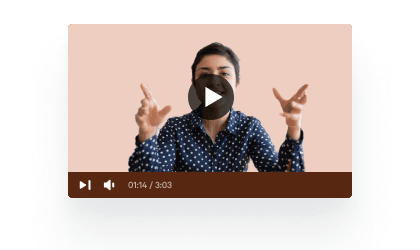Average Variable Cost Formula: Definition & How to Calculate
Learn the Average Variable Cost formula with a clear definition and step-by-step guide on how to calculate it. Includes examples to help you understand and apply the concept easily.
Posted March 6, 2025

Table of Contents
The average variable cost formula is essential for tracking production expenses and maximizing profitability. This guide breaks down the concept of average variable cost (AVC), explains why it matters, and provides a clear formula with examples to help you calculate it accurately.
Are you ready to understand the key to managing variable costs? Knowing how to apply the average variable cost formula is crucial for any business owner or manager aiming to boost profitability and make informed decisions. Whether you're running a small startup or managing a large corporation, grasping this concept provides a competitive edge in today's market.
In this guide, we’ll walk you through the basics of variable costs, the distinction between variable and fixed costs in business models, and the significance of the average variable cost formula in business strategy. With practical examples and step-by-step calculations, you’ll gain the tools to manage your variable expenses effectively and optimize your business operations.
What is a Variable Cost?
Variable costs are expenses that change depending on how much a company produces or sells. If production or sales increase, these costs increase. If production or sales decrease, these costs go down as well. This is why they’re called “variable” costs – they vary with the level of activity.
Total Variable Costs
Imagine you’re running a bakery. If you bake 10 cakes, you’ll need to buy enough ingredients (flour, eggs, sugar, etc.) for 10 cakes. If you bake 20 cakes, you’ll need twice as many ingredients. These costs – for ingredients, packaging, or even the electricity to run your oven – are examples of variable costs because they depend on how many cakes you bake.
So, the total variable cost refers to the total amount of money spent on these items for all the units you produce. If the cost of ingredients for one cake is $5, and you bake 100 cakes, your total variable costs are:
Total Variable Costs = 5×100 = $500
Variable Cost per Unit
Now let’s focus on variable cost per unit – this means the cost of producing one single item, like one cake. In our example, the ingredients for one cake cost $5. That $5 is your variable cost per unit.
Here’s an important detail: while the total variable costs change depending on how much you produce, the variable cost per unit stays the same. If each cake costs $5 to make, it doesn’t matter if you bake 10 cakes or 1,000 cakes – the cost per cake is still $5.
Why Does This Matter?
Understanding variable costs is important for running a business. If you know how much it costs to make each product, you can 1) set the right price to cover your costs and make a profit, 2) predict how much money you’ll spend if you increase or decrease production, and 3) make smart decisions about whether producing more or fewer units is worth it.
How to Calculate Average Variable Cost
Average Variable Cost Formula
The Average Variable Cost (AVC) measures the variable cost per unit of output. It is calculated using the formula:
Average Variable Cost (AVC) = Total Variable Cost ÷ Quantity Produced
Where:
- Total Variable Cost (TVC): This is the sum of all variable expenses incurred during a production period (e.g., costs of materials, labor, and utilities directly tied to production).
- Quantity Produced (Q): The total number of units produced during the same period.
Average Variable Cost Calculation Examples
Example 1: A bakery produces 500 loaves of bread in one week. The total variable costs (TVC) for ingredients, packaging, and utilities amount to $1,250.
- Formula: AVC = TVC ÷ Quantity Produced = 1,250 ÷ 500
- Result: AVC = $2.50 per loaf
- Explanation: On average, the bakery spends $2.50 in variable costs to produce one loaf of bread.
Example 2: A company manufactures 1,000 smartphones in a month. The total variable costs, including materials, labor, and assembly-line power usage, total $75,000.
- Formula: AVC = TVC ÷ Quantity Produced = 75,000 ÷ 1,000
- Result: AVC = $75 per smartphone
- Explanation: On average, the company spends $75 in variable costs to produce one smartphone.
Example 3: A small clothing brand produces 375 jackets in a season. The total variable costs (TVC) include $4,125 for fabric, $870 for thread and accessories, and $6,562.50 for labor.
- Formula: AVC = TVC ÷ Quantity Produced = 11557.5 ÷ 375
- TVC = 4125 + 870 + 6562.5 = 11557.5
- Result: AVC = $30.82 per jacket
- Explanation: This means that on average, it costs the clothing brand $30.82 in variable expenses (fabric, thread, and labor) to produce a single jacket.
Learn with practical examples, clear formulas, and actionable steps to improve your financial analysis. From bakery operations to tech manufacturing, strengthen your understanding of key metrics to make better decisions.
How to Calculate Variable Costs Step-by-Step

Step 1: Identify all variable costs
Begin by identifying all expenses that change with production or sales volume. Focus on costs directly tied to output while excluding fixed expenses like rent or salaries for administrative staff. Common examples include:
- Raw materials: Direct goods used in production.
- Direct labor: Labor costs tied to units produced.
- Commissions: Sales-based compensation.
- Utilities: Energy costs vary with production.
- Packaging and shipping: Costs incurred only when items are packaged and shipped.
Step 2: Gather Data
Collect the necessary data for each variable cost, including:
- The cost per unit for each expense (e.g., $5 per unit of raw materials).
- The total number of units produced or sold during the period.
- Any batch-specific costs (e.g., bulk shipping rates or batch-specific energy usage).
Step 3: Apply the Formula
Use the following formulas depending on your objective:
- Total Variable Cost = Variable Cost per Unit × Total Units Produced
- Alternative Formula = Total Cost of Materials + Total Cost of Labor
- Average Variable Cost Formula = Total Variable Cost ÷ Quantity Produced
Variable vs. Fixed Costs
To grasp the concept of variable costs fully, it's essential to understand how they differ from fixed costs. Unlike variable costs, fixed costs remain constant regardless of production or sales volume. Common fixed costs include rent, employee salaries, insurance, and office supplies. These expenses are incurred regularly and are unlikely to fluctuate over time. On the other hand, common variable costs fluctuate with production levels, including expenses like raw materials and direct labor costs. The total variable costs depend on the unit variable cost multiplied by the number of units produced.
Here's a simple comparison:
| Variable Costs | Fixed Costs |
| Change with production volume | Remain constant |
| Examples: raw materials, direct labor | Examples: rent, salaries |
| Zero when production stops | Incurred even with no production |
Mixed Costs
In addition to variable and fixed costs, businesses also encounter mixed costs (or semi-variable costs), which combine fixed and variable elements. For example, a cell phone plan with a fixed monthly fee plus additional charges based on usage exemplifies mixed costs.
To analyze mixed costs, businesses often use techniques like the high-low method or the least squares method to separate fixed and variable components. This breakdown provides a clearer view of total costs, aiding in more accurate financial planning and decision-making.
Why Does Variable Cost Matter?
Understanding variable costs is essential for effective business management, as these costs directly impact several key financial decisions. For pricing, variable costs help ensure that product prices cover per-unit expenses, supporting profitability. In planning and budgeting, variable costs allow companies to forecast expenses accurately when adjusting production levels. They also play a critical role in break-even analysis, helping determine the minimum production needed to cover all costs. Additionally, variable costs influence calculations of gross margin, profit margin, and net income, making them fundamental to profit assessments. By tracking variable expenses like raw materials and direct labor, businesses can adjust operations to control costs, optimize profitability, and improve overall financial decision-making.
Coach Recommendations
Get help from expert coaches to understand variable costs and other key business topics. Whether you're preparing for interviews or improving your skills, they can guide you every step of the way.
Key Takeaways
- Average variable cost helps determine how much it costs, on average, to produce one unit of output.
- Variable costs change directly with production levels, while fixed costs remain constant.
- Understanding and calculating variable costs is essential for setting prices, forecasting expenses, and optimizing profitability.
- The formula for average variable cost is total variable cost divided by the quantity produced.
- Accurate tracking of variable costs supports better financial decision-making and operational efficiency.
FAQs
How do you determine the total variable cost?
- To determine the total variable cost, multiply the total output quantity by the variable cost per unit. For instance, if ABC Company manufactures 200 widgets each month and each widget incurs a variable cost of USD 7.00, the total variable cost would be 200 widgets x USD 7.00 = USD 1400.00.
Can you provide some examples of variable costs?
- Variable costs can include expenses such as raw materials, piece-rate labor, production supplies, commissions, delivery costs, packaging supplies, and credit card fees.
What is the method to calculate the average variable cost?
- The average variable cost (AVC) is calculated by dividing the total variable cost (TVC) by the quantity produced (Q). Alternatively, it can be computed by subtracting the average fixed cost (AFC) from the average total cost (ATC).
Read these next:
- How to Excel in Mental Math Practice: A Comprehensive Guide
- Market Entry Framework: The Expert Guide
- The Expert Guide to Market Sizing Questions (With Examples)
- Case Interview Math Guide: Everything You Need to Know
- The Profitability Case Framework: A Key to Solving Profitability Cases
- Management Consulting Vs Real Estate Consulting: A Side-by-Side Comparison


















